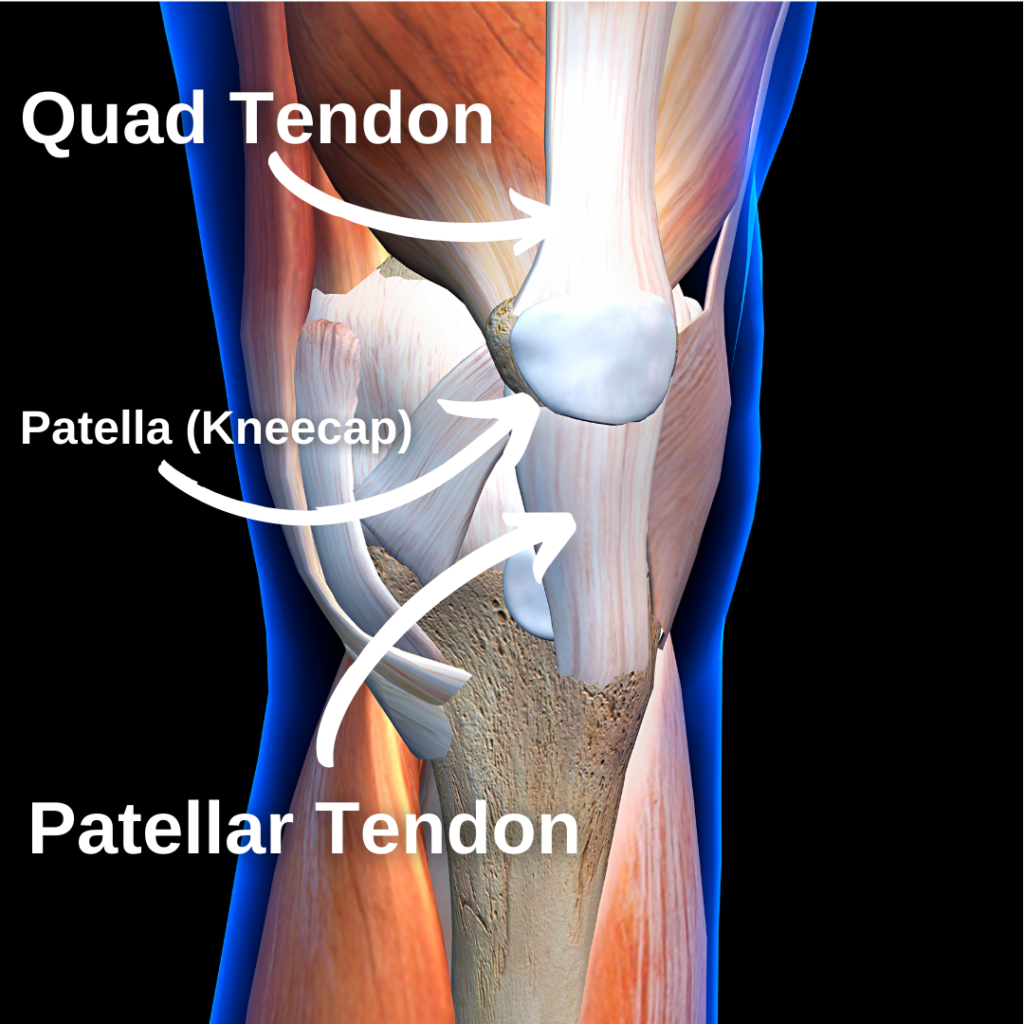There are a host of knee pain myths. Most myths reflect the belief that knees are fragile and need to be coddled. But that’s simply not true.
The knees are complex and robust. Your knees are far more resilient than you think.
Here are 7 knee pain myths you have definitely heard.
1. Running Causes Arthritis
Churning through miles like Forrest Gump does increase your risk of knee osteoarthritis (OA) – that’s if you run over 57 miles per week according to recent research (Alentorn-Geli 2017).

If you run less than 8 miles every day, running can prevent knee OA. Research shows that recreational running has a protective effect against knee osteoarthritis.
Recreational runners develop knee arthritis 3.5% of the time, while sedentary non-runners have a 10.2% risk of knee OA. The superhumans who run 57+ miles/week clock in at 13.3%.
Despite the downsides of running, it’s one of the best ways to maintain a healthy body weight. Effective weight management shrinks the risk of knee arthritis.
2. “Knees Over Toes” Is Dangerous
Well-intentioned personal trainers, physios and “gym bros” perpetuate this misguided idea. This is one of the most common knee pain myths. And now one of the most criticized thanks to the “knees over toes guy.”
Squatting or lunging with the knees over the toes increases stress on the knee extensor mechanism – the quadriceps muscles, the quadriceps tendon, the kneecap and the patellar tendon.

Here’s the twist:
Stress builds strength.
Your body adapts to specific demands placed upon it – the SAID principle – so squatting and lunging with the knees over the toes will make your knees more comfortable doing just that.
Important note: be aware that doing too much, too soon can cause pain – whether you’re squatting deep or pushing your limits with any other exercise.
3. Squat On Your Heels
This all-too-common cue is guaranteed to knock you off balance. Ever tried to balance on your heels? Not very easy.
Knee pain myths #2 and #3 go hand-in-hand. Both cues minimize forward knee travel to reduce knee and quadriceps loading. However, this shifts significant demands to your hip muscles and joints.
Instead of keeping your weight back, distribute your weight evenly through your forefoot and rearfoot. Side effects include better balance, happier hips and stronger quads.

4. Squatting Is Bad For Your Knees
Squatting is a proven way to build lower body strength. And more strength permits higher activity levels. In fact, physical therapists and physicians use squatting to a chair as an objective indicator of leg strength, mobility and fall risk.
Deep squatting (in moderation) is beneficial for knee motion, strength, and balance (Agarwal 2019). Plus, squatting is functional. Squatting proficiency translates to being able to get up and down from the toilet, the couch and the floor.
5. Sore Knees Need Rest
The popular RICE protocol (Rest, Ice, Compress, Elevate) has questionable scientific support, which is why I’ve written that RICE is outdated.

RICE is particularly suboptimal for minor to moderate musculoskeletal sprains and strains. Movement experts know that “motion is lotion.”
Movement lubricates the knee joints and provides nutrition to the cartilage. Plus, it brings blood and healing nutrients to nearby muscles.
6. Meniscus Tears Need Surgery
Many meniscus tears are successfully managed with physical therapy. Degenerative meniscus tears respond just well to physical therapy as to surgery, according to several high-powered studies (Giuffrida 2020).
Plus, undergoing meniscus surgery elevates knee arthritis risk in the ensuing decade (Papalia 2011).
7. Arthritis Always Causes Pain
Can knee osteoarthritis cause pain? Absolutely.
Does it always cause pain? No.
Unfortunately, this is one of the most debilitating knee pain myths because individuals diagnosed with arthritis see it a life-sentence to knee pain.
However, extensive research shows that knee pain and arthritis are weakly linked. In fact, most knee arthritis does not cause pain, according to numerous studies (Bedson 2008).
Often, knee arthritis is comparable to skin wrinkles – more common with age and not necessarily a problem.
The Next Step
Are achy knees keeping you from the active lifestyle you want? Not sure where to start with an exercise program?
Find out the 7 low-impact exercises I recommend to keep sore joints happy. Plus, learn how to create an exercise habit from scratch, all in this article: The 7 Best Cardio Exercises for Bad Knees
Readers: Have you heard all 7 of these knee pain myths? Which one surprised you the most? Share your thoughts in the comments.
For more evidence-based health insights, join the free Facts & Physio Newsletter. Plus, get The Recovery Checklist when you sign up.

